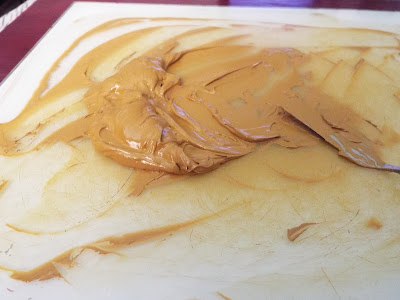Moon and Clouds
Oil on canvas panel, 8 x 10 inches, 2015.
I did this a few months back when we had a super moon eclipse. I didn't get to see the moon or the eclipse as it seems like the sky is never clear when you want it to be here in NJ :( but a night of vain hope made me feel like painting some sort of nocturne. Sometimes I look at the crystalline beauty of the night sky and get tempted to just give up painting anything else. But I enjoy the daylight too much for that.
I used a limited palette. If I recall I only used lead white, phthalo blue, Armenian mummy (a Natural Pigments color), and Cyprus raw umber light. I might have also used French ultramarine, but I don't remember -- it's good to have both a red-blue and a green-blue.
This was the painting I tried using the Ridner medium in a layered approach. It excels used thick or thin and its powers synergize marvelously with lead white (lead white's textural powers are special on their own but almost always gain greater force when augmented with a resin medium). I see great potential for this having been Church's medium.
But there are still a few flaws. For one thing it did not perform as well thinned with turpentine as I expected. We know the Hudson River School artists generally used turpentine as an as-needed dipper cup medium, and there are areas in their paintings that show extremely thinned passages. Church, in particular, has an ink-like effect you more commonly see in aqueous media where the edges of the brushstroke are thicker than the center because the very fluid stroke pooled then collapsed upon itself rapidly as the solvent evaporated quickly. You see this effect throughout Church's oeuvre in limited areas, like in some of the detailing of the rocks in the Heart of the Andes, but by his late career the effect is rampant (see any of his European paintings like the Aegean Sea, which I have seen, or Tropical Scenery in the Brooklyn Museum, which I have not seen though the Google Art Project image seems to show this effect). I suspect abuse of this technique is part of the reason his late paintings seem to be in such bad shape, though we know he blatantly violated fat-over-lean in the oily underdrawing of El Rio de Luz (how a veteran painter could make that mistake, I don't know), so there could be other reasons for the condition of later paintings, and, like I said, he seems to have utilized extremely-solvent-thinned paint in areas of earlier paintings that are in good shape.
Anyway, with my Ridner medium paint (half and half with the colors), when I thinned it enough to produce the ink-like effect, it worked, but the paint film was too weak upon drying and was easily damaged by overpainting (and would not have bore a final varnishing if left alone). Apparently the wax weakens the film that would otherwise be much stronger were it just oil paint and oil copal varnish. But I think I know what the problem is. The historical Ridner medium would have had lead and umber dryers in the oil, and likely lead in the copal varnish (plus materials suppliers "colormen" might have had dryers pre-added to the colors). Church also ordered large amounts of Siccatif Courtrai, a powerful dryer, though he may have only used it for sketches. I made my Ridner medium without lead as I originally tried it as a sketch box medium, and I try to keep poison colors out of the sketch box as things are cumbersome out in the field without a sink to remedy mishaps. The drying power of the lead should counteract the slow drying of the wax and also help render things more adhesive. And if that's not enough, then there is still one more option. I prefer walnut oil and have made my Ridner medium with it. However linseed oil possesses a slightly stronger film strength (with a number of undesirable trade-offs, in my opinion, like susceptibility to wrinkling), and we have evidence that suggests most HRS artists were probably using linseed oil as their paint binder. So we shall see what happens.









